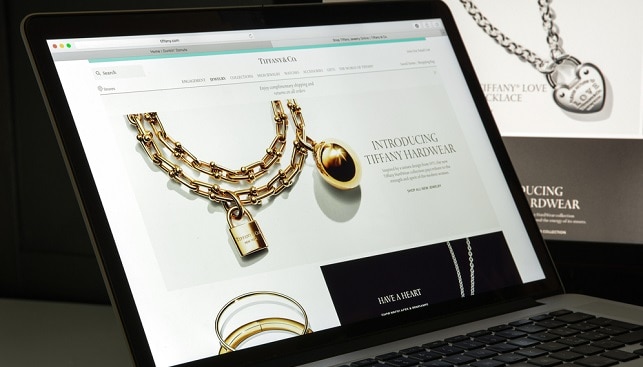In this blog, we discuss everything there is to know about agile inventory management, covering tips, technology, and benefits. If you’re a jewelry brand, you can refer to this guide to scale your business and make the most out of data-backed insights.
What is Jewelry Inventory Management?
Inventory management ensures brands and retailers can supply products at sufficient levels and at the right prices. It covers ordering, manufacturing, stocking, and selling inventory, which should all work cohesively to run a thriving business.
With robust jewelry inventory management, brands can determine what to stock and how much of it to keep surplus and shortages in check. Stock management isn’t limited to finished products, as it also takes raw materials into account. As for purchase lists, they are influenced by trends that highlight what customers are looking for.
Stock turnover is a measure of success, as inventory that sells translates to revenue. Conversely, a large amount of stagnant inventory costs money. It is never desirable for stock to outnumber sales, as it indicates a negative rate of return. Deadstock forces companies to sell products at clearance prices or to dispose of inventory altogether.
Why Is Effective Inventory Management Important for Jewelry Brands?
A poor inventory management system doesn’t only lead to fulfillment delays that impact customer experience, but also to wastage and high business costs. Worldwide, the cost of inventory distortion including shrinkage, stockouts, and overstock is estimated to be $1.1 trillion.
Read on to see how jewelry inventory management boosts operational efficiency for retailers and brands.
The value of the online jewelry market worldwide is expected to grow to $60 billion by 2027 from $21.5 billion in 2020. Brands can anticipate more digital consumers looking to buy jewelry online, as well as more competition that will enhance the online shopping experience. Winning jewelers have the advantage of supplying the right precious stones and gems to the right customers, and effective inventory management can ensure that they meet demand without costing shoppers time and effort.
Understanding Consumer Preferences and Expectations
In eCommerce, inventory management allows brands to understand the shopping behavior of their target market. This influences how much stock is created to accommodate demand, maximize revenue, reduce waste, and avoid out-of-stock scenarios.
Few things disappoint shoppers as much as out-of-stock items. In the pandemic, however, this has become almost unavoidable, with out-of-stock products surging 172% from pre-pandemic levels. With effective inventory management, there can be a seamless integration between online platforms and in-store or warehouse stock levels.
Instant Inventory management also empowers brands and retailers to accurately predict which items, styles, or materials will be in demand in the future. The better planning and management of inventory allows online businesses to meet consumers with the products they desire the moment they need them.
Ensuring Business Operation Visibility
Inventory management ensures seamless day-to-day business operations as there is transparency into supply, the number of orders, and transactions. Businesses can easily tap into this information to see which pieces are selling and which aren’t in demand. To this effect, they can choose to limit production, minimize unsold stock and save resources.
Setting the Pace for Automation and Agility
It’s possible to automate almost everything, including order invoicing, fulfillment, and product tagging. The automation provided by a jewelry inventory system can give brands and retailers more time to focus on other business areas. For instance, putting more effort and budget into customer-facing product discovery because it’s supported by organized product tags and descriptions.
Brands benefit from increased precision, accuracy, and scalability due to inventory management automation. It also enables jewelers to update their stock levels in real-time and make data-driven decisions.
8 Tips for Building and Managing Inventory for Jewelers
The following are some best practices and techniques you can start with to build and manage your jewelry inventory.
1. Monitor Market Trends and Popular Items
To anticipate what will become fashionable in the seasons to come, brands and retailers can keep an eye on what’s popular and trending in the jewelry industry. The information can be gleaned from various sources, including industry events, magazines, blogs, and social media. You can set up trend forecasting sessions and combine external information with what you gather from your internal operations, including search data, sales, and more.
2. Plan Material Purchases
Minimize deadstock by carefully planning the materials you need to buy for your jewelry business. Gather data on the style preferences and budget of your target market and make forecasts around that. In doing so, you can avoid falling into the trap of purchasing excess materials. Deadstock costs businesses money and limits cash flow, which isn’t optimal in the long run.
3. Properly Label Your Jewelry Pieces
Segment your jewelry pieces and gems by category, style, material, type, season, and intended market. You can take the labeling one step further with an SKU number, RFID, or a barcode according to categories for easy tracking. When your pieces are properly labeled, it will help you keep track of your items and easily locate stock.
4. Run an ABC Analysis
Another means of effectively grouping your products is by conducting an ABC analysis, one of the most widely used inventory management techniques. This entails splitting up items in terms of profitability, demand, and cost. “A” pieces are the most valuable and “C” jewelry have the lowest consumption. SKUs that fall under group “A” should always be available in specific quantities. Meanwhile, “C” products are not as strictly controlled or prioritized, but should certainly not exceed a predetermined amount. Those in group B are in the middle in terms of value but can move to either A or C depending on market trends.
High-resolution photography is important in terms of sales, but did you know it also plays a part in inventory management? The jewelry vertical is very visual, and it’s easier to index jewelry based on appearance than on text. Pictures should help capture the finest details to distinguish one creation from the next. This will prevent confusion with similar-looking but ultimately different jewelry pieces.
6. Prepare a Contingency Plan
Predict scenarios that could create issues for your jewelry business and establish a contingency plan to meet such shortcomings head-on. Excess stock and out-of-stock products are two such examples, so having a backup to fall on will mitigate any substantial impact on your brand. One plan B option in the jewelry sphere is to make sure you have multiple raw material sources in case of logistical or supply chain roadblocks, which is currently the status quo industry-wide.
7. Let Go of Deadstock
With a measure of creativity and ingenuity, deadstock can be repackaged into more desirable pieces during quarterly sales with generous discounts. Materials can also be melted and refined to create new products or repurposed into other pieces. Donating deadstock jewelry pieces is another option for social impact.
8. Consistently Track Your Jewelry Inventory
Conduct regular audits of your stock levels to ensure your inventory management is up to speed. Brands usually hold inventory checks monthly, quarterly, or annually. The more often it’s done, the more likely it is for reports and records to be accurate. The process, while time-consuming, is necessary as it makes problem-solving and accounting easier.
Advanced Features to Look for in Jewelry Inventory Software
Enterprise resource planning (ERP) and software as a service (SaaS) applications are accessible and easy to implement today more than ever. They make inventory management and record keeping comprehensive and accurate for jewelry companies of all sizes. Poor inventory management is no longer an excuse with numerous plug-and-play tools that identify best-sellers and high-profit products, amongst other KPIs.
Manually tagging products is tedious, expensive, and prone to inconsistency due to human errors. A jewelry inventory management software that automates product tagging can save you hours of manual work.
Product tags serve as the backbone of your inventory management system. If they’re accurate and consistent, it’s easier and faster to surface relevant items for a seamless customer experience. Effective product tagging also provides valuable insights and reports on sales, supply, and demand for inventory optimization. With this knowledge, brands can make better production decisions.
Gathering and Analyzing Search Trends
Properly labeled and organized inventory enables brands to observe search trends and further optimize their stock. Analytics detects patterns and determines demand across the supply chain through searches, engagement, and conversion made on the website. This can inform jewelers about which raw materials and gemstones to purchase, for example. Historical and real-time search trends can also predict which products will be in high demand according to holidays, seasons, and occasions.
Adjusting Your Merchandising Strategy
Would you like to have continued demand for a popular, high-value product? Or is your aim to clean out seasonal products and old stock before replenishing your inventory?
With an inventory management system in place, jewelry brands can rearrange their homepages to display best-sellers or highlight items they would like to free from their inventory. The layout of the site can be optimized to draw attention to priority SKUs and drive conversion.
Using Visual Data to Understand Shoppers
Visual AI can detect the tiniest of details in a photo. When customers search your site using pictures, the technology can pick up metadata that helps surface matching products that appeal to customers’ unique preferences.
Connecting to Other eCommerce Tools and Channels
Robust jewelry inventory management software syncs to other eCommerce tools and sales channels. Any activity from online or offline sales touchpoints is reflected properly and in real-time across channels. This ensures full transparency with vendors and buyers, as well as smooth operations within the organization. By having a single source of data, you can better address inventory issues, make data-driven decisions, and deliver integrated buying journeys.
Providing Room to Scale
Jewelry inventory management not only fosters seamless business operations but also allows brands to expand. It can set Periodic Automatic Replenishment (PAR) levels so jewelers rarely experience out-of-stock scenarios. Regular audits can assess inventory health, profits, and stock flow to keep businesses up to date. Any discrepancies and inefficiencies discovered in the supply can also be quickly addressed.
The Customer Experience Angle in Streamlined Inventory Management
Implemented and managed correctly, your brand inventory can pave the way for customer loyalty and satisfaction. It ensures product availability, quicker fulfillment, and seamless returns.
Here are other ways a streamlined inventory system improves the customer experience.
The faster you surface the right products for shoppers, the faster your inventory will move and lead to increased revenues. An inventory management system founded on accurate and organized tags allows shoppers to easily discover and explore jewelry on your site. Relevant search results, organized navigation, useful filters, and updated categories are just some applications of robust tags.
Recommends Hyper-Relevant Items
It’s not enough to merely recommend popular and reasonably priced pieces. Recommendations work significantly better if shoppers are presented with personalized, relevant content based on previous site interactions. With the right technology, supported by an effective inventory management system, brands can identify the unique styles that resonate with their customers and display similar items. Showing similar item suggestions that reflect shoppers’ individual preferences instead of general trending products, can increase both engagement and conversion.
Creates Opportunities for Shoppable Content
In a vertical with big-ticket luxury items, it’s common for customers to do their research before purchasing. Jewelry brands can establish themselves as an authority by making it easier for customers to discover jewelry through editorial and educational content. Blog posts, gift lists, buying guides, and stories are all engaging forms of content where you can incorporate shoppable products linked to your inventory.
Provides a Strong Foundation for Visual Search
Fine jewelry shoppers are highly visual. They may not be able to describe what they want in words, but they have a good idea of how it looks. These consumers get purchase ideas from commercials, social media, and the real world. With accurate and detailed tags, brands can quickly connect matching products in their inventory with photos uploaded by customers. The convenience of visual search both simplifies and speeds up product discovery by surfacing products that matter most to shoppers.
Offers a Structured Way to Create Product Collections
With a robust inventory management system, brands and retailers can group products according to seasonal promotions, discounts, holiday sales, or themes. These collections can then be shown on the homepage to keep things fresh for website visitors, increase engagement, and encourage further exploration.
Besides making the product discovery and purchase process seamless, effective inventory management also provides valuable data that informs production. With visual AI, in particular, even small details from shoppers’ interactions with images on your site can serve as input for product development. This ensures more efficient production and guarantees shoppers always find the most relevant jewelry pieces on your site.
Leads to Faster Fulfillment
Jewelry inventory management encourages transparency among brands and retailers. Having access to the location and availability of assets can help stores to align their sales strategies. In addition to warehouse reliability, tight integration among eCommerce and inventory management tools enables brands to predict fulfillment times and transactions. This, in turn, can be communicated to shoppers to manage their expectations, leading to faster turnaround and better customer experiences.
Makes Pricing Reasonable and Attractive
Tedious inventory management costs time, and consequently, money. With automated processes, brands and retailers can free up resources tied to manual tagging. The efficiency and speed of managing the brand catalog can reduce product prices, as can preventing overstocking and ensuring the uninterrupted flow of best-sellers.
Conclusion
Effective inventory management is not just a means to guarantee a continuous jewelry supply chain. It’s also a way to generate data that can aid brands and retailers in their decision-making. In today’s digital landscape, data is power — with it, companies can optimize their processes and strategize the end-to-end supply chain — from raw material sourcing to order fulfillment.
With automated and easily integrated inventory management systems in place, jewelry brands can better meet customer expectations on different platforms, be it mobile, online marketplaces, or brick-and-mortar stores. Proper inventory management enables jewelry brands and retailers to keep costs manageable, automate inventory tagging, have a clear view of their catalog, and solve stock problems in a timely fashion.




